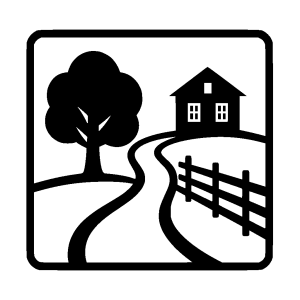
21. Prästgårdsbacken (The rectory hill)
Here at ’Prästgårdsbacken’ there used to be both a priest and a school. The first house on Norrby gärdesväg is Komministerbostället (the Minister’s residence), which has belonged to the Church of Sweden since 1680. The farm was hit by a devastating fire in 1854. It was rebuilt in 1857 in its current form – a semi-detached cottage with two apartments. The Minister is a priest and assistant to the vicar who lives in the large vicarage at Häverö church. Many priests have lived here over the years – the last being Jacob Arnold Sundell, who served between 1900 and 1909. The farm is now private, but the place still bears memories of its long church history.

Bönhuset (The prayer house) was built in 1875 next to the Komministerbostället to function as a school. As early as 1777, there was an itinerant schoolmaster active in Norrby, but the prayer house is the first permanent school building. In 1882, the number of pupils amounted to 53 children. During this time, teaching was only conducted every other day. In 1908, the school activities were moved to the newly built Bergby School (see sign no. 1 ). The Evangeliska Fosterlandsstiftelsen (EFS) then took over the building, which was converted into a prayer house. The congregation held its prayer meetings, Sunday schools and other gatherings here. Many villagers who grew up in the 1940s and 50s have strong memories of the prayer house. Going to Sunday school is a given – “It would be a poor do if they did not!” The prayer house was demolished in 1983 and a new building was erected on the site. Today, only memories of teaching and spiritual gatherings remain on the site.
NOTE: Respect the peace and quiet of the home – do not enter the grounds!
Extra material
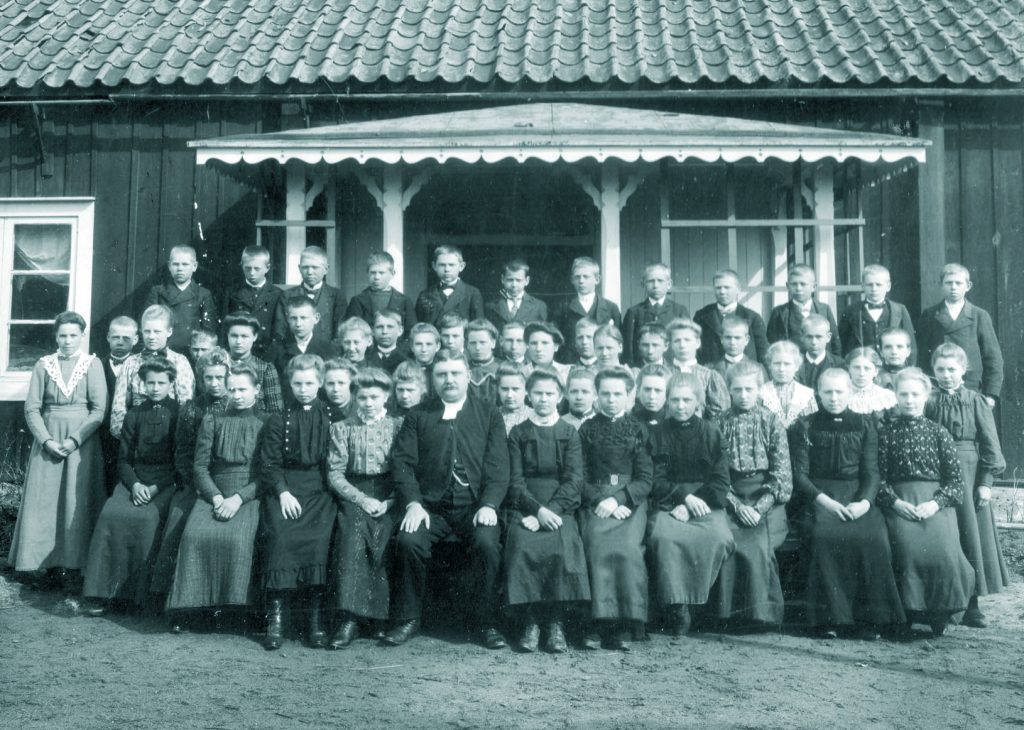
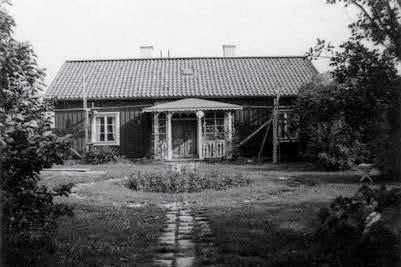
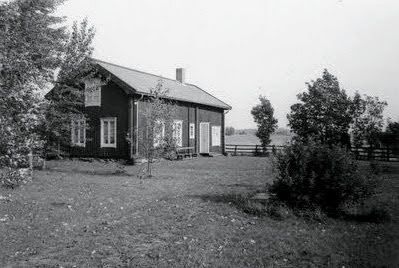
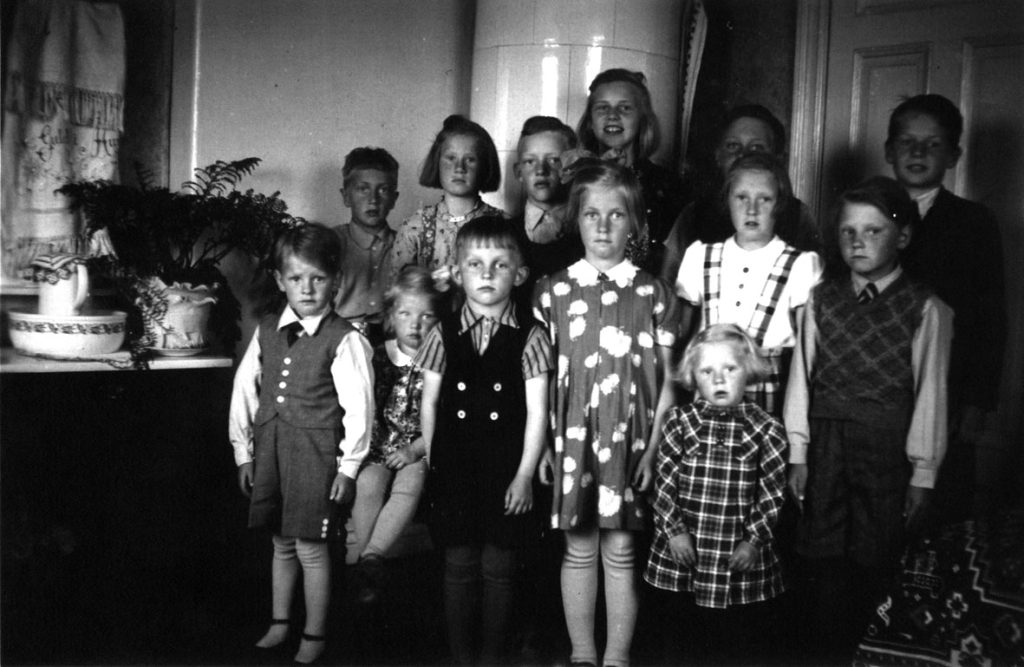
From left, front row: Bengt Albinson, Unknown, Dick Wedberg, Unknown, Barbro Albinsson, Birgit Albinsson, Bertil Albinsson.
Back row: Lennart Frank, Unknown, Bo Börjemalm, Märta, Unknown, Lars-Erik Isberg.
